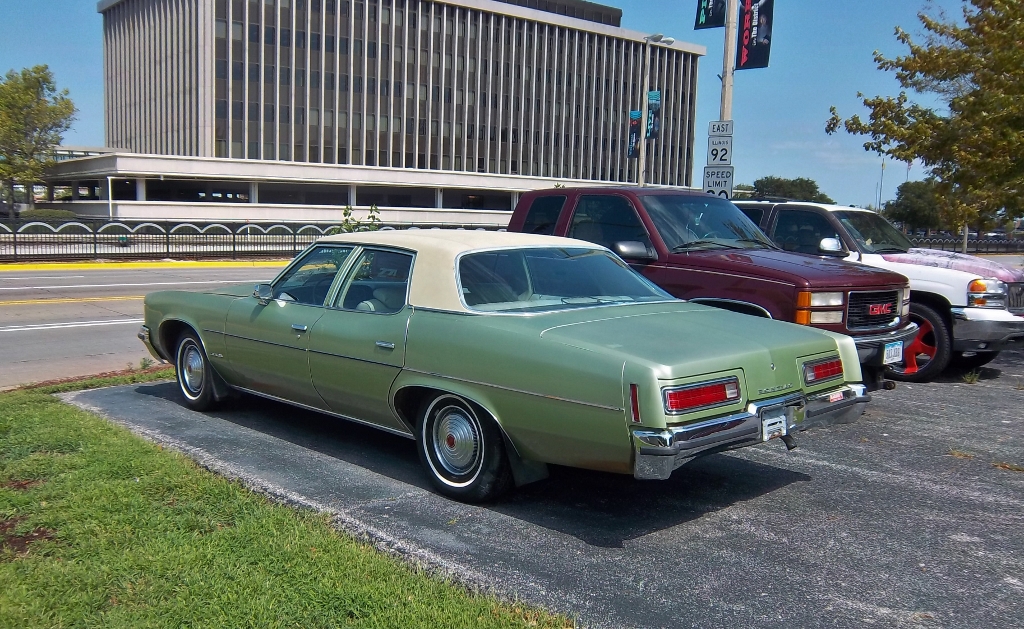
For decades, folks stepping up to a Pontiac from a Chevrolet meant getting a genuinely nicer vehicle. Unlike in later decades, from the 1940s through most of the 1970s, the differences went beyond the grille, taillights and trim. For example, the 1972 Pontiac Catalina. The most basic full-size 1972 Pontiac you could get, but it still came equipped with a standard V8, power steering and power brakes. For the miser’s special, you’d have to go across the street to the Chevy dealer for a Turbo-Thrift Six, three-on-the-tree Biscayne, because there was no such animal from Pontiac Motor Division-unless you were in Canada and snagged a Laurentian with the 250 CID six, that is!
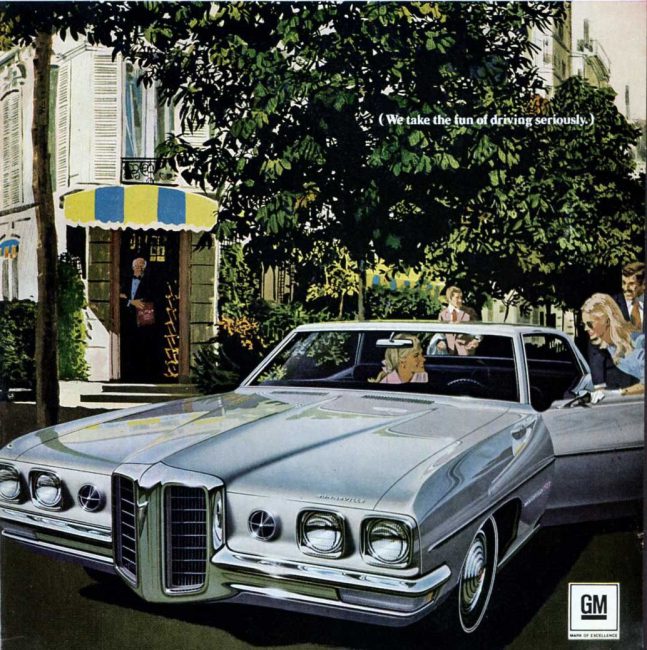
1970 Bonneville
The 1970 Pontiacs that preceded our featured Catalina were very different from the sleek Pontiacs of the early- to mid-’60s. They were all-around nice cars, despite a facelift that made them a bit baroque-looking in front view. A year later, they would be replaced by a super-sized version.
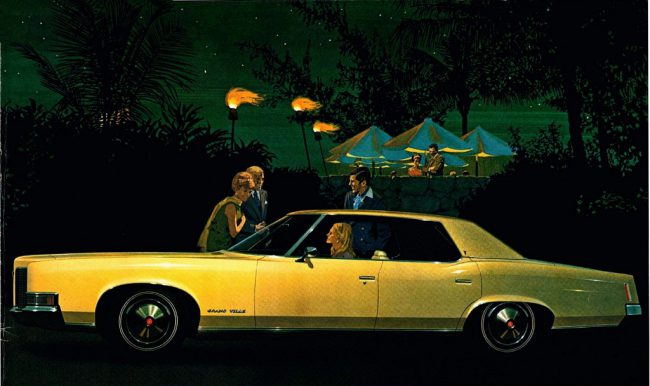
The 1971s were more subdued up front. In place of the chrome radiator shell of the ’70 was another prominent grille, this time a full-width affair that made the car look even wider than it was. In an odd move, a new Grand Ville model appeared at the top of the line.
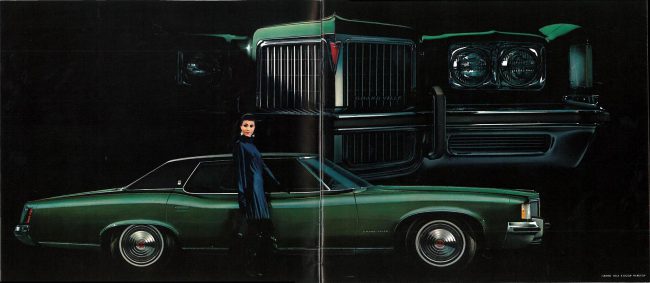
In the early ’70s, Pontiac began to step away from being the powerhouse of style and performance it had been during the go-go Sixties. With models like the Grand Ville, it seemed that outside of the midsize cars, with the classy GP and hot rod GTO, Pontiac was looking more to Buick for inspiration.
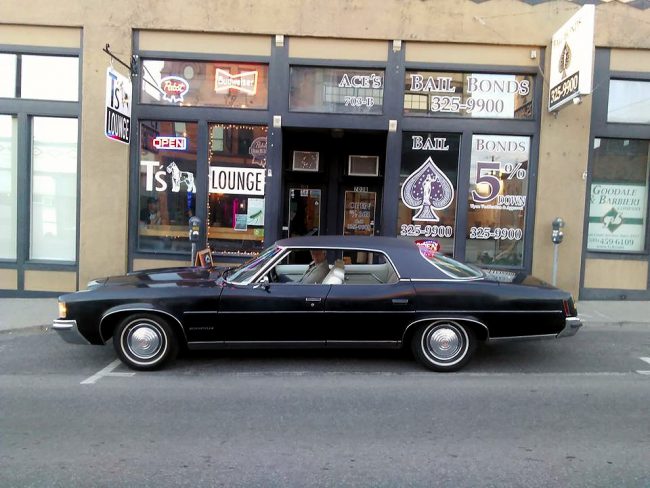
The Grand Ville’s introduction moved the storied Bonneville down a step, into the slot left by the recently departed Executive series; Pontiac’s volume biggie, the Catalina, returned.
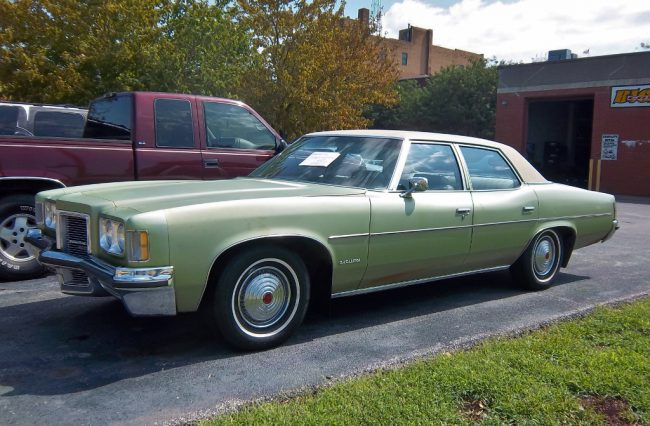
As before, the Catalina was available in a variety of models: two- and four-door hardtops; a sedan; a convertible; and six- and nine-passenger station wagons. Joining the standard Catalina was a new Catalina Brougham series, which effectively replaced the Ventura as a Catalina with a little more gingerbread.
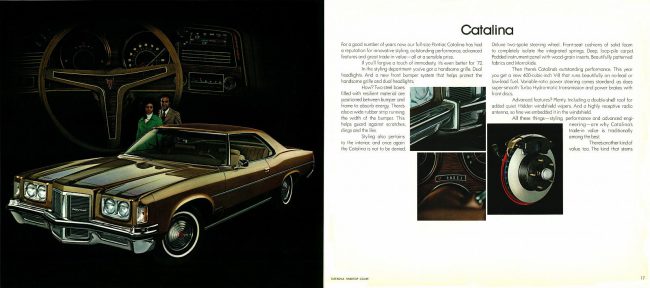
With all that was new for 1971, there were only minor changes for the 1972 model year. The somewhat awkward grille of the ’71 was replaced with a much more attractive classic-style grille. The Grand Ville, Bonneville, Catalina and Catalina Brougham lineup remained the same. Closed Grand Ville models (a convertible was also available) were set apart from other B-body Pontiacs by roof lines shared with the C-body Oldses, Buicks and Cadillacs. Grand Villes like this ’72 four-door hardtop enjoy the distinction of being the only GM B-bodies with C-body roofs.
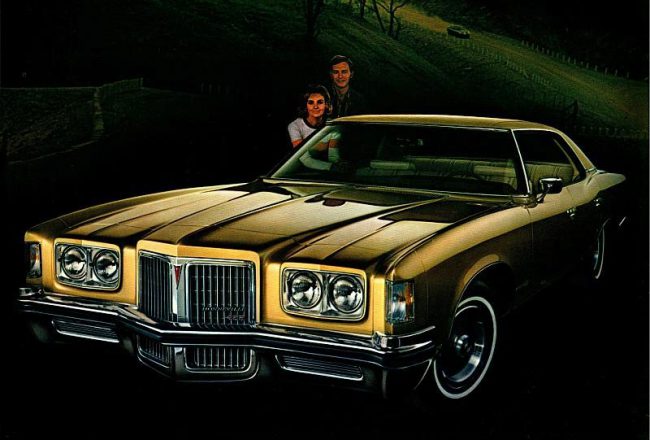
Although no longer the top-drawer Pontiac, the Bonneville was still quite nice, and also quite popular. As seen in this brochure picture, it and other non-Grand Villes had a more flowing roof line. Meantime, Pontiac dropped the Bonneville drop-top in favor of the Grand Ville convertible.
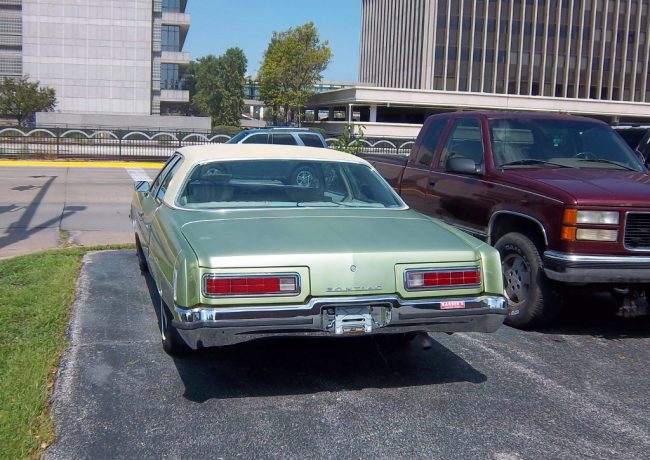
But hey, we’re here to talk about the Catalina, aren’t we? Unlike the wider-ranging full-size lineup from Chevrolet, Pontiac’s roster contained no fleet/tightwad special. If you wanted rubber floor mats, a six-cylinder engine and no chrome gewgaws, you were, sadly, plain out of luck. The Catalina sedan may have been the cheapest big Pontiac, but it still boasted a two-barrel, 400 cu in V8, automatic transmission, variable-ratio power steering and power front disc/rear drum brakes. Cheapskates would have to be directed to the Chevy store across the street to check out Bel Airs and Biscaynes.
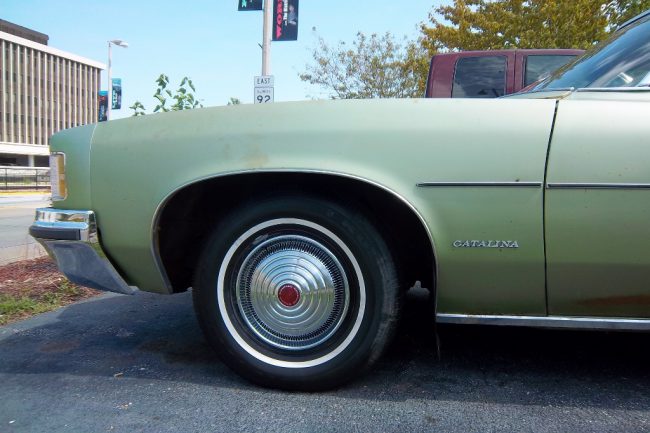
Yes, the Catalina was quite well-equipped for an early-’70s American car; back then, it seemed that everything cost extra. But the Cat was the exception to the rule, with its standard solid foam front seats and seat backs, nylon carpeting, teak woodgrain on the dash and door panels, concealed wipers and a finicky radio antenna embedded in the windshield.
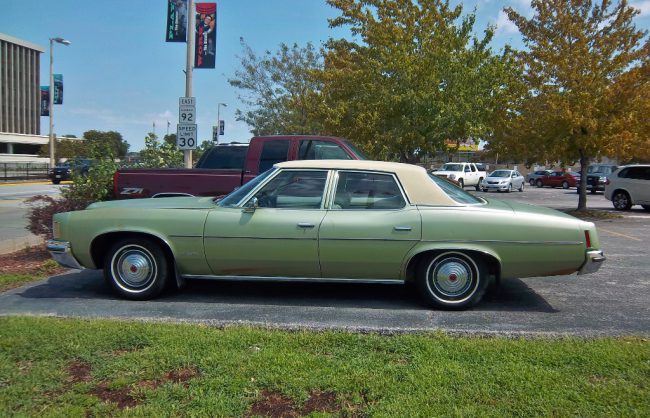
Outside, Catalinas were dressed up with bright moldings around the roof gutters and at the rear edge of the hood. Hubcaps were standard, but the optional full wheel covers and vinyl roof seen on our featured Cat produced a very rich-looking car.

Of course and ultimately, you did pay more for the Catalina’s extra features: A 1972 Biscayne sedan cost $3,074 with the Turbo-Thrift Six, and $3,408 with the V8. At $3,713, the Catalina sedan cost some 10% more than a V8 Biscayne.
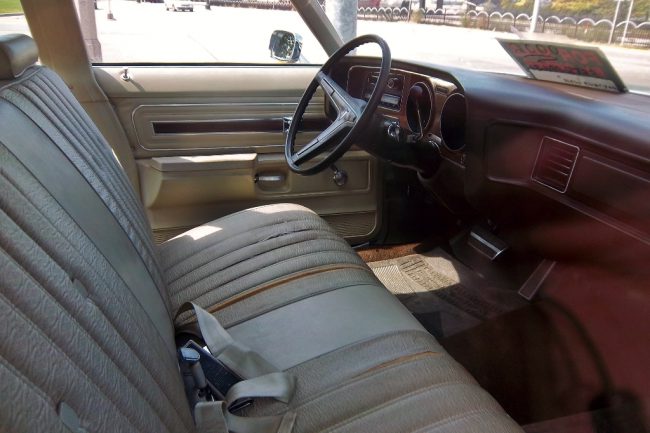
Inside, however, the Catalina probably was a more pleasant place to be. Catalina coupes and sedans got cloth-and-Morrokide upholstery, while convertibles and station wagons featured more weather- and kid-friendly all-Morrokide seating.
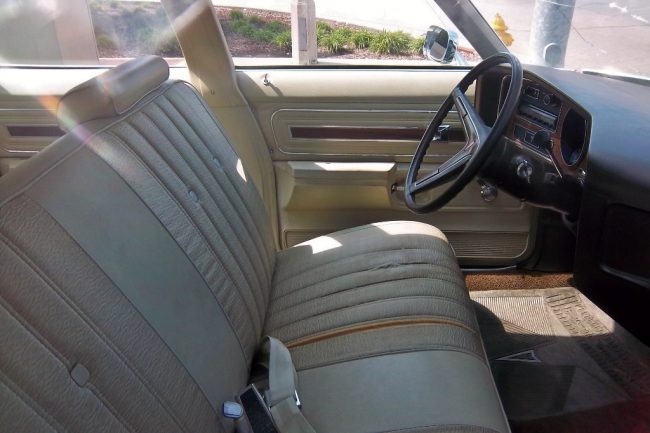
Though this is the standard Catalina interior, you could get a snazzier option. Offering even more comfort and status was the previously mentioned Catalina Brougham, which returned for 1972.
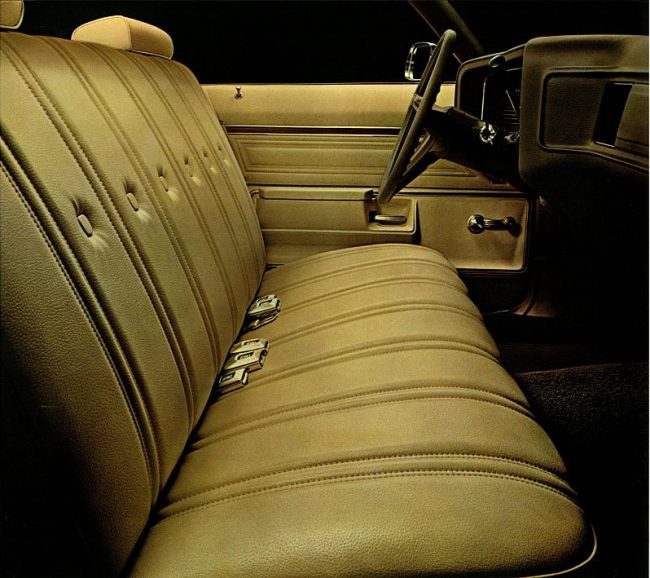
As you’d expect, the Brougham sported fancier interior trim with carpeted lower door panels, a deluxe steering wheel, clock, full wheel covers and color-keyed exterior door-handle inserts. In addition, Brougham identification graced the sail panels. Running about $200 higher than a comparable standard Catalina, it wasn’t a big seller, with only 8,007 sedans, 8,762 four-door hardtops and 10,545 two-door hardtops finding buyers–a drop in the bucket compared with the nearly 200,000 regular Catalinas sold that year. The Brougham was nowhere to be found when the 1973 Pontiacs were introduced.
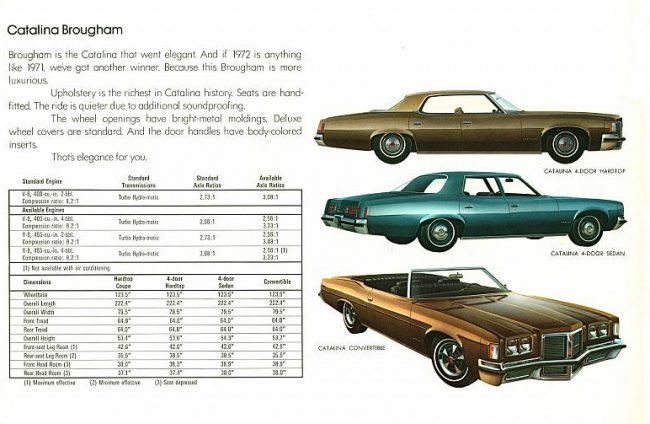
Nineteen seventy-two was also the last year for the Catalina convertible. The $4,080 drop-top sold just 2,399 copies.
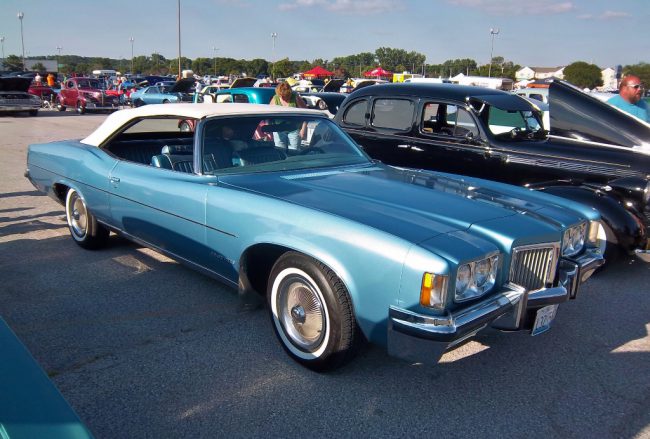
The Grand Ville, however, remained catalogued after 1972. It would keep Pontiac’s B-body convertible flame alive through 1975.
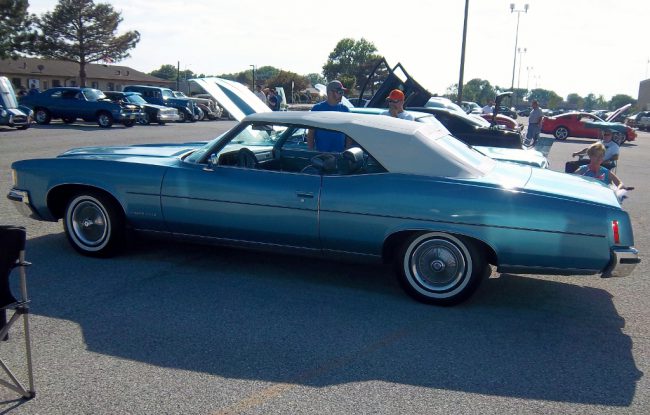
Yes, I have a thing for full-size 1970s Pontiacs. While my favorite would be the 1979 Bonneville that my dad owned, I also am a big, big fan of the 1971-76s.
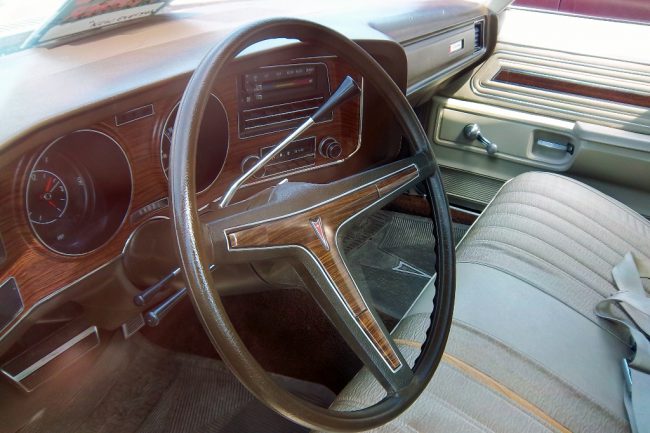
This cool instrument panel is one reason why. Unlike most other big 1970s gunboats, the Pontiacs had round gauges instead of the strip-type speedometers seen on just about everything else. I also liked these steering wheels, with just enough trim to let you know you’re in an uplevel car.
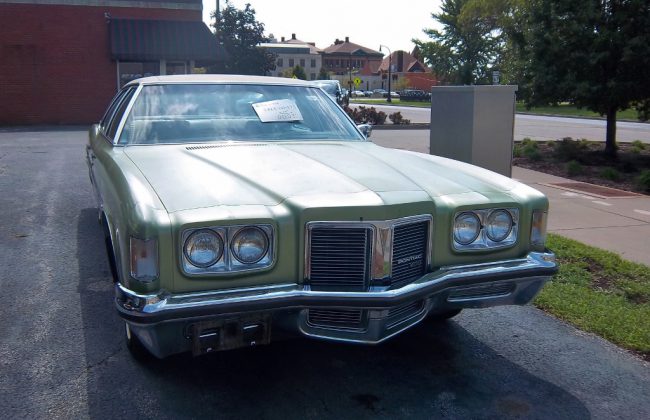
The Catalina’s standard powerplant was a two-barrel 350 V8. Optional engines were a 2 BBL 400, 4 BBL 400, 2 BBL 455 and a 4BBL 455. Dual exhaust was optional, adding about 20 horsepower to whichever engine you chose.

I was very happy to find this solid model 2L69 Catalina sedan in downtown Rock Island back in early September of 2012. This 4,154 lb. land yacht is one of 83,004 Catalina sedans built in ’72. This one was an original Nebraska car according to the current owner. A nice, honest car, and that light green is so Seventies. Were all ’70s cars green or brown? It sure seems like it, judging by the survivors I see these days. After I took these pictures, the car appeared on ebay a few months later. At any rate, I never saw it again. Hope the current owner kept it just as it was!







4 Comments
A nice boulevard or highway cruiser, maybe a bit too big for in town parking but looks great .
-Nate
Thanks for reminding me, I’ve been meaning to pick up “The ‘Burbs” on DVD 🙂
The 71-76 full-size GM sedans were just enormous. Objectively I know their footprint on the road is only about the size of a current Suburban, but damn if they don’t feel bigger from behind the wheel. And the ride is something that must be experienced to be believed. You float over everything in a state of serenity. You can’t stop or change direction very quickly, but that ride must be experienced to be believed. (Observations based on driving a ’72 Caprice Classic and a ’74 Grand Ville convertible.)
The ’77 downsizers were a huge leap forward in everything but ride quality.
Back in 1975, my parent’s Montego got t-boned in the church parking lot. We got a rental car until ours was fixed, it was a 1974 Catalina (post) four door. I don’t think I had ever been in a car that big. It wasn’t just big on the outside, it was big on the inside. I’m pretty sure that it was the regular 400 cid 2 bbl Poncho motor, but my dad loved that car. It would just fly away from stop signs and up hills, as compared to our Montego. That thing just felt overwhelmed on flat ground, forget hills of any kind. And we have a lot of them in our part of Northeast Ohio.
As impressive as the rental Catalina was, my folks who had witnessed the depression, were horrified by the fuel economy, or the lack thereof, compared to the Mercury. Dad was glad to get the Merc back, allegedly because he was afraid of getting a ticket. But I really think he didn’t like feeding the Catalina…